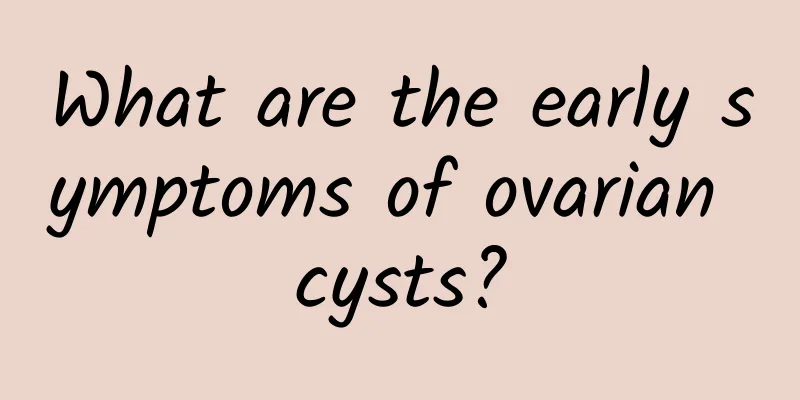What are the early symptoms of ovarian cysts?

|
What are the early symptoms of ovarian cysts? Are there any good treatment remedies? Ovarian cysts can be detected through obvious changes in the body. If there are phenomena such as increased abdominal circumference, abdominal mass, abdominal pain, compression symptoms, and menstrual disorders, you should be alert to ovarian cysts. Female friends should pay attention to go to the hospital for examination and treatment in time. If a female friend has the following four symptoms: 1. Increased abdominal circumference and abdominal swelling. This is the most common phenomenon for patients. Patients find that their clothes or belts are too tight, and then they notice that their abdomen is enlarged, or they accidentally notice it in the morning, so they press their abdomen and find that there is a swelling in the abdomen, plus abdominal distension and discomfort. 2. Abdominal pain. If the tumor has no complications, there is little pain. Patients with ovarian tumors feel abdominal pain, especially when it occurs suddenly, which is mostly caused by the twisting of the tumor pedicle, or occasionally by cyst rupture, bleeding or infection. Malignant cysts often cause abdominal pain and leg pain, and the pain often causes patients to seek emergency treatment. 3. Menstrual disorders. Ovarian cysts on one or even both sides do not cause menstrual disorders because they do not destroy all normal ovarian tissues. Some uterine bleeding is not endocrine, or it may be caused by ovarian cysts that change the distribution of pelvic blood vessels, causing endometrial congestion; or it may be caused by ovarian malignant cysts that directly metastasize to the endometrium. Menstrual disorders caused by endocrine tumors are often combined with other secretory effects. 4. Compression symptoms. Huge ovarian cysts can cause dyspnea and palpitations due to compression of the diaphragm. Ovarian cysts combined with large amounts of ascites can also cause such symptoms; however, the dyspnea of some patients with ovarian cysts is caused by unilateral or bilateral pleural effusion, which is often combined with ascites. |
<<: Will ovarian cysts affect pregnancy? What should I do if I have ovarian cysts during pregnancy?
>>: Is fertility possible with adenomyosis?
Recommend
Dietary considerations for cervical erosion
More than 80% of women who have sex have cervical...
How to treat irregular menstruation caused by uterine cold
How to treat irregular menstruation caused by ute...
How to care and maintain pelvic peritonitis
The appearance of pelvic peritonitis troubles wom...
It is very important to do a good job in preventing cervical erosion
Cervical erosion is a common gynecological diseas...
The golden ratio of New Year's Eve dinner is 631, which reduces the burden on the stomach
As the Spring Festival approaches, nutritionists ...
Understanding the health regimen for menopausal women
Menopause is a transitional period for women from...
What to do if you have premature ovarian failure
The ovaries are the reproductive organs of women ...
Is it normal to have menopause again after one and a half years? Causes and solutions
Recently, many women have reported that they sudd...
The most typical symptoms of patients with cervical hypertrophy
Cervical hypertrophy is also a common gynecologic...
What are the causes of vulvar leukoplakia?
Regarding the cause of vulvar leukoplakia, it is ...
What does threatened miscarriage mean?
Threatened miscarriage refers to a symptom that o...
The harm of multiple uterine fibroids. Will multiple uterine fibroids lead to dystocia?
The female uterus is a unique organ that nurtures...
Why do you get left ovarian cysts?
Why do I get a left ovarian cyst and what are the...
Bacterial infection is the main cause of acute pelvic inflammatory disease
The causes of acute pelvic inflammatory disease a...
How to prevent uterine fibroids
Uterine fibroids are common fibroids in women, wh...









